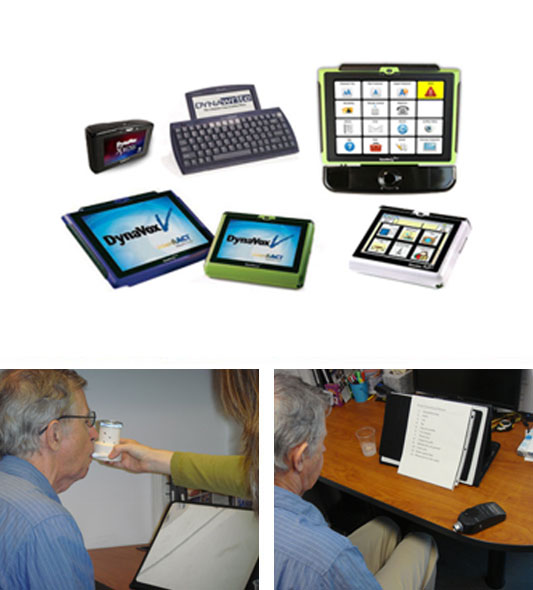Speech & Voice Disorders
Speech Disorders
The term speech disorder refers to a person who is unable to produce speech sounds correctly, clearly or fluently. Children may experience developmental articulation delays while adults may experience speech difficulties due to neurologic disease or as a part of normal aging.Apraxia and dysarthria are two types of motor speech disorders commonly evaluated, diagnosed and treated at New York Neurogenic SLP, P.C.
- Apraxia of speech is caused damage to the parts of the brain associated with speaking. Individuals with apraxia experience difficulty sequencing sounds, syllables, and words. The severity depends on the nature of the brain damage.
- Dysarthria occurs when the muscles of the mouth, face, and respiratory system become weak or slow moving. The type and severity of dysarthria is dependent upon which area(s) within the nervous system are affected. Signs of dysarthria include slurred speech, speaking softly, slow rate of speech, rapid rate of speech, mumbling, hoarseness, breathiness, drooling, chewing and/or swallowing difficulty.

LSVT LOUD®
Clinicians at New York Neurogenic SLP, P.C. , are certified and experienced in the delivery of LSVT LOUD® (Lee Silverman Voice Treatment). LSVT LOUD® emphasizes high phonatory-respiratory effort in order to improve voice quality, vocal volume and speech intelligibility for patient with Parkinson’s Disease and associated neurological disorders (i.e., MS, CP, TBI, CVA). LSVT LOUD® stimulates generalized neural motor activation across the speech production system and related motor systems resulting in improvements in articulation, facial expression, swallowing and limb movements. Click here for LSVT LOUD® Brochure.
Stuttering
Stuttering is a speech disorder in which sounds, syllables, or words are repeated or prolonged, disrupting the normal flow of speech. These speech disruptions may be accompanied by struggling behaviors, such as rapid eye blinks or tremors of the lips. Stuttering can make it difficult to communicate with other people, which often affects a person’s quality of life.
Symptoms of stuttering can vary significantly throughout a person’s day. In general, speaking before a group or talking on the telephone may make a person’s stuttering more severe, while singing, reading, or speaking in unison may temporarily reduce stuttering.
Stuttering is sometimes referred to as stammering or dysfluent speech.
Voice
Voice occurs when a sound wave is generating from vocal fold vibrations. Speech is created when a sound wave is modified or shaped by the pharynx, palate, tongue, mouth and lips. In order to have a clear voice, the vocal folds must operate in perfect unison. Changes in size, weight, tone and movement of the vocal folds can cause a voice disorder. The term “voice disorder” refers to when an individual’s vocal quality is altered or changed. The onset of voice disorders can be acute or slow. Examples of sudden onset voice disorders include trauma, infection, stroke, injurious inhalation, intubation, conversion reaction, or severe allergic reaction. Slow developing voice disorders are typically caused by degenerative neurologic diseases, musculo-skeletal tension, vocal abuse and misuse, gastro-esophageal reflux, and chronic food/seasonal allergies.
Common voice disorders treated at New York Neurogenic SLP, P.C., include vocal nodules, edema, contact ulcers, polyps, hyperkeratosis, spasmodic dysphonia, laryngitis, granuloma, and vocal fold paralysis.
Upon completion of an individualized voice evaluation utilizing both perceptual and objective computerized measures, a treatment plan is developed to reduce vocal misuse and abuse and improve vocal hygiene and quality.

What are the types of AAC systems?
New York Neurogenic SLP, P.C., has a long standing working relationship with DynaVox Mayer-Johnson®, the world’s leading provider of augmentative and alternative devices. When a child or adult cannot use speech to effectively communicate in all situations, a speech-language pathologist works collaboratively with DynaVox Mayer-Johnson to investigate all AAC options. Typically AAC systems are divided into two categories:
- Unaided communication systems —rely on the user’s body to convey messages. Examples include gestures, body language, and/or sign language.
- Aided communication systems —require the use of tools or equipment in addition to the user’s body. Aided communication methods can range from paper and pencil to communication books or boards to devices that produce voice output (speech generating devices or SGD’s) and/or written output. Electronic communication aids allow the user to use picture symbols, letters, and/or words and phrases to create messages.
For more information about speech and voice disorders, please contact us.

Augmentative and Alternative Communication Device
What is AAC? Augmentative and alternative communication (AAC) includes all forms of communication (other than oral speech) that are used to express thoughts, needs, wants, and ideas. We all use AAC when we make facial expressions or gestures, use symbols or pictures, or write.
People with severe speech or language problems may rely on AAC to supplement existing speech or replace speech that is not functional. Special augmentative aids, such as picture and symbol communication boards and electronic devices, are available to help people express themselves. AAC devices help increase social interaction, school performance, and feelings of self-worth.
